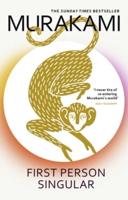Publisher's Synopsis
The Book of the Thousand Nights and a Night, vol2 Richard Francis Burton One Thousand and One Nights is a collection of stories collected over thousands of years by various authors, translators and scholars in various countries. These collections of tales trace their roots back to ancient Arabia and Yemen, ancient India, ancient Asia Minor, ancient Persia, ancient Egypt, ancient Mesopotamian Mythology, ancient Syria, and medieval Arabic folk stories from the Caliphate era. Though an original manuscript has never been found, several versions date the collection's genesis to somewhere between AD 800-900. What is common throughout all the editions of The Nights is the initial frame story of the ruler Shahryar and the framing device incorporated throughout the tales themselves. The stories proceed from this original tale; some are framed within other tales, while others begin and end of their own accord. Some editions contain only a few hundred nights, while others include 1001 or more "nights." The collection, or at least certain stories drawn from it (or purporting to be drawn from it) became widely known in the West during the nineteenth century, after it was translated - first into French and then English and other European languages. At this time it acquired the English name The Arabian Nights Entertainment or simply Arabian Nights. The best known stories from The Nights include "Aladdin's Wonderful Lamp," "Ali Baba and the Forty Thieves," and "The Seven Voyages of Sinbad the Sailor." Ironically these particular stories, while they are genuine Middle Eastern folk tales, were not part of the "Nights" in its Arabic versions, but were interpolated into the collection by its early European translators.










